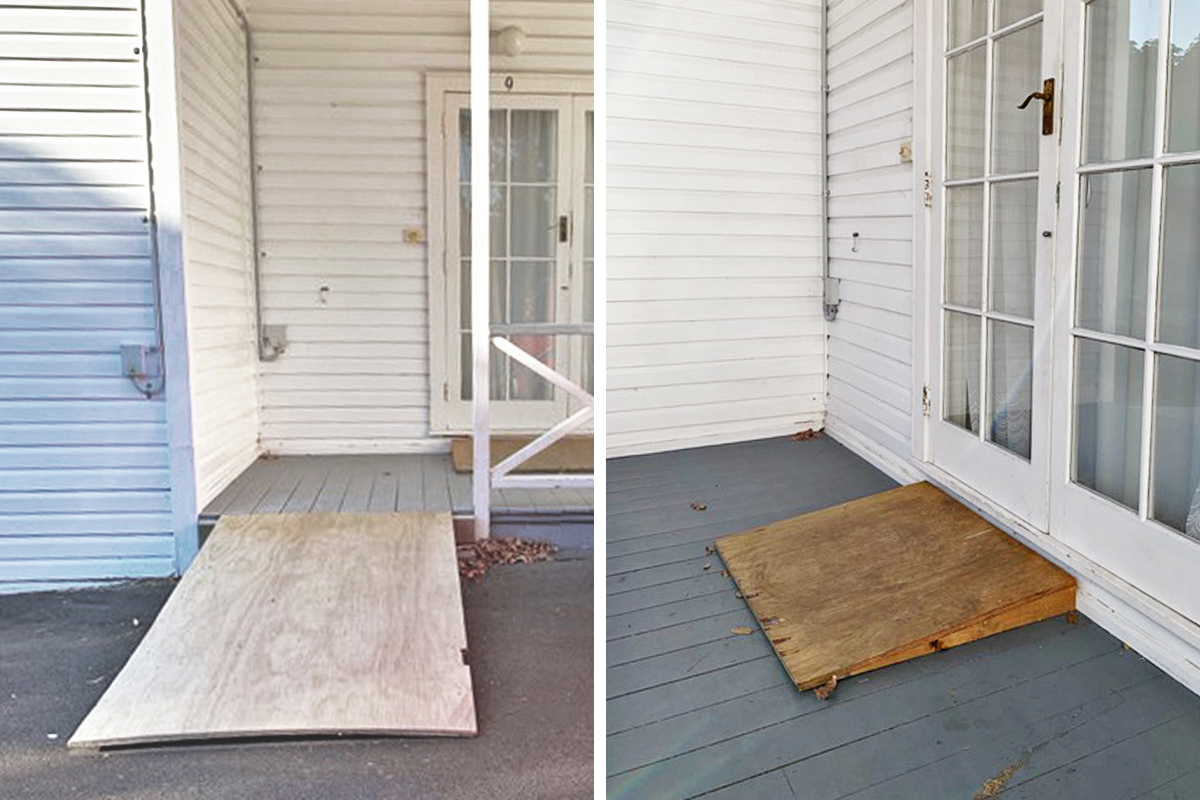A couple of weeks ago I felt a wave of anxiety overcome me after watching a news segment about a wheelchair user who was struggling to find an accessible rental property in Auckland.
A year ago I was in a pretty similar position. I have a condition called Sacral Agenesis, it affects my spine, and as a result, I use a wheelchair to get around. I’m pretty mobile for a wheelchair user, I can transfer out of my chair easily and move around freely. What I can’t do is stairs and narrow spaces that won’t allow me to turn around in my chair. From my experience looking for a rental property, 90% of one-bedroom Auckland rentals have stairs or are too narrow for a wheelchair.
At the beginning of 2018, the lease was ending on the house my partner and I were in, and because the access wasn’t fantastic nor was the location and price, it was an excellent opportunity for us to find somewhere a little more suitable for our needs.
We started our search with some pretty strict criteria, a budget, ideal locations and some non-negotiables for access. Based on that, we narrowed our search down to three properties, and we missed out on all three.
That was setback one. After talking it through with my partner we agreed that we were going to have to be less picky about where we lived, so we widened the search and managed to narrow down ten properties that looked appropriate.
When searching for listings, all we had to determine access was photos and the listing description. As this wasn’t always clear from those, I always made a point of emailing the listing owner to try and find out more information. Of the 40 or so people I emailed about access, maybe 15 got back to me, usually to tell me it wasn’t accessible.
Based on what information we could get we started attending viewings, I think this was the most stressful part of the entire process for me. We never really knew what we were going to get, throughout two weeks of viewings one property out of ten was suitable for us.
"I was in a panic by this point, wondering if we were ever going to find somewhere to live."
I think the worst viewing we attended was a property that was described as being a ground floor apartment with photos matching the description, giving us hope that it seemed promising, only when we got there, there were stairs to get from the street down to the ground floor.
I was in a panic by this point, wondering if we were ever going to find somewhere to live. I sat down one afternoon and literally scrolled through every one bedroom, Auckland listing on property websites to find more options for us, it was almost by accident that I came across a small one bedroom flat in Mount Eden that looked perfect.
There was a viewing that evening, so I sent the listing to my partner, and we went along, It was in a great location, well within our budget, and the access wasn’t terrible. We applied straight away but didn’t want to get our hopes up, so we kept looking, thankfully something was smiling down on us, and we were offered the flat four days later.

The relief I felt knowing that we would be okay after weeks of stressing and panicking was like no other. I was optimistic when we first started looking for a rental, and by the time we found one I was so terrified of ever having to look for another rental to live in ever again.
Even now, a year later the thought of ever having to look for another rental still terrifies me and hearing the stories of others that are struggling, in the same way, gives me anxiety.
I know change won’t happen overnight, but I feel there is so much room for more to be done to make it easier for people with access needs to find suitable rentals, even if the starting point is making listings and photos a bit more descriptive.
So with that in mind, here are three ways I think listings for rentals can be made more inclusive for renters with access needs.
Number one:
A badge on property sites that identifies a property is accessible. While I understand access means different things to different people, and it won’t meet everyone’s access needs it could be a stepping stone in the right direction to help people single out suitable properties faster.
Number two:
While a badge might not be able to give the full picture of accessibility, a small paragraph describing the access of the property will give potential renters a better idea of what to expect. Such as “single level property with a small step up to the front porch, open plan living, with ample low kitchen storage space, the bathroom is equipped with a large bathtub and walk-in shower.” Explanations like this will help potential renters understand what you what you deem is accessible against their own ideas of what is accessible for them.
Number three:
Back up your description with photos, to really help potential renters see what the access of your property is like. While I get you want to make your property look as good as it can, that shouldn’t mean you leave out significant details like steps down to the ground level or even steps up to the front door. People with access needs will look at those photos a million times to try and analyse whether or not the property could be suitable for them.
Disclaimer* My opinion is based off my own experiences looking for an accessible rental and how I think it could be made easier. In no way am I trying to speak on behalf of all people with access needs or say these are the only ways to make things easier. I would love to hear other people’s thoughts on the matter and start a discussion about how we make it easier and less stressful for people with disabilities to find suitable rentals.
Rebecca Dubber is a New Zealand Paralympic swimmer and one of our new contributors.


